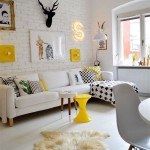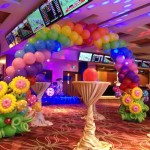Classroom Decoration Ideas for Grade 8
Creating an engaging and stimulating learning environment is crucial for students in Grade 8. This is a pivotal year as students transition towards more complex academic concepts and increasing independence. The classroom environment can significantly impact their motivation, concentration, and overall learning experience. Thoughtful decoration can transform a mundane space into a vibrant and inspiring area that fosters curiosity and supports the curriculum.
Decorating a Grade 8 classroom requires careful consideration of the students' developmental stage. They are no longer elementary students, but they aren't quite high schoolers either. The decorations should be age-appropriate, visually appealing, and educational. Avoiding overly childish themes is essential while still maintaining a welcoming and encouraging atmosphere. The goal is to create a space that promotes collaboration, critical thinking, and a sense of belonging.
Incorporate Academic Themes
One of the most effective approaches to decorating a Grade 8 classroom is to directly integrate academic themes. This not only enhances the visual appeal of the room but also reinforces key concepts and provides students with constant reminders of the subject matter being taught. The specific themes will vary depending on the subjects covered in the curriculum, but the underlying principle remains the same: to create a visually engaging and educationally relevant environment.
For a language arts classroom, consider incorporating literary quotes, timelines of significant authors, or visual representations of different literary genres. Large posters featuring famous literary characters or book covers can also add a touch of visual interest. Word walls are particularly useful, especially for vocabulary building. These walls can display commonly misspelled words, synonyms, antonyms, or words relevant to specific units of study. Encourage student participation by allowing them to contribute words or definitions to the word wall.
In a mathematics classroom, visual aids such as geometric shapes, formulas, and graphs can be prominently displayed. A number line is a classic example, but exploring more advanced concepts like the Pythagorean theorem or trigonometric functions can also be visually represented. Consider creating a "problem of the week" board where challenging math problems are presented for students to solve. This can foster a sense of competition and encourage critical thinking skills. Using patterns and tessellations as decorative elements can also subtly reinforce mathematical concepts while adding visual appeal to the classroom.
Science classrooms offer a plethora of opportunities for incorporating academic themes. Periodic tables, diagrams of the human body, and models of the solar system are all excellent choices. Consider creating a display showcasing famous scientists and their contributions. Visual representations of scientific processes, such as the water cycle or the food chain, can also be highly effective. Encourage hands-on learning by incorporating science kits or experiments into the classroom decor. A small terrarium or aquarium can also add a touch of nature to the classroom while providing opportunities for observation and learning.
For social studies classrooms, maps are an indispensable tool. World maps, historical maps, and maps illustrating specific events or regions can all be used to enhance the learning experience. Timelines of important historical events, posters featuring historical figures, and displays showcasing different cultures can also be highly effective. Encourage students to contribute to the classroom decor by bringing in artifacts or pictures that represent their own cultural backgrounds. This can foster a sense of inclusivity and promote cross-cultural understanding.
Utilize Color Psychology and Lighting
Color psychology plays a significant role in influencing mood and behavior. The colors used in the classroom can impact students' concentration levels, creativity, and overall sense of well-being. Therefore, carefully selecting colors that are conducive to learning is crucial for creating an optimal learning environment. It is generally recommended to use a combination of calming and stimulating colors to achieve a balanced effect. Overly bright or intense colors can be distracting and overwhelming, while muted or neutral colors can create a dull and uninspiring atmosphere.
Blue is often associated with calmness, focus, and productivity. It can be a good choice for areas where students need to concentrate, such as reading corners or study areas. Green is another calming color that is often associated with nature and growth. It can be used to create a relaxing and refreshing atmosphere in the classroom. Yellow is a stimulating color that can promote optimism and creativity. However, it should be used sparingly as too much yellow can be overwhelming. Orange is a warm and inviting color that can foster a sense of community and collaboration. Red is a powerful color that can evoke energy and excitement, but it should be used cautiously as it can also be associated with anger and aggression.
In addition to color, lighting also plays a crucial role in creating a positive learning environment. Natural light is ideal, as it can boost mood and energy levels. However, if natural light is limited, artificial lighting can be used to supplement it. Avoid harsh fluorescent lighting, which can cause eye strain and headaches. Instead, opt for softer, more diffused lighting. Consider using lamps or task lighting to create a warmer and more inviting atmosphere. Dimmable lights can also be a useful tool for adjusting the lighting levels to suit different activities. During quiet reading time, the lights can be dimmed to create a more relaxing atmosphere, while during group work, the lights can be brightened to promote alertness and engagement.
The way colors and lighting are combined can further enhance the overall effect. For example, using a combination of blue and green with natural light can create a calming and focused environment. Using a combination of yellow and orange with warm lighting can create a stimulating and inviting atmosphere. Experiment with different color and lighting combinations to find what works best for the specific needs of the classroom and the students.
Promote Student Ownership and Collaboration
Creating a sense of ownership and collaboration is crucial for fostering a positive and engaging learning environment. When students feel like they have a stake in their classroom, they are more likely to be invested in their learning. One of the best ways to promote student ownership is to involve them in the decoration process. This can be done in a variety of ways, from soliciting their input on color schemes and themes to allowing them to create artwork or displays for the classroom.
Consider creating a student art gallery where students can showcase their artwork. This not only adds visual appeal to the classroom but also provides students with a sense of pride and accomplishment. Another option is to create a collaborative mural or bulletin board where students can contribute their ideas and artwork to a shared project. This can foster a sense of teamwork and collaboration and allow students to express their creativity in a meaningful way.
Displaying student work is a powerful way to promote a sense of ownership and accomplishment. Instead of simply posting student work on the walls, consider creating a more formal display. This could involve framing student work, creating a dedicated display area, or using a specific theme to showcase student work. When displaying student work, be sure to provide constructive feedback and praise to encourage students to continue to strive for excellence.
Assigning students specific roles or responsibilities in the classroom can also promote a sense of ownership and collaboration. This could involve having students take turns being the classroom librarian, the plant waterer, or the technology assistant. By giving students these responsibilities, you are empowering them to take ownership of their learning environment and contribute to the overall success of the classroom. Rotate these roles regularly so that all students have the opportunity to participate.
Encourage students to collaborate on projects and assignments. Group work can foster a sense of teamwork and allow students to learn from each other. When assigning group work, be sure to provide clear guidelines and expectations. Also provide opportunities for students to reflect on their group work experience and identify ways to improve their collaboration skills. By promoting student ownership and collaboration, one can create a classroom environment where students feel valued, respected, and empowered to learn.
Implementing these ideas requires adaptability and awareness of the specific needs and preferences of the Grade 8 students. By creating a visually appealing, educationally relevant, and student-centered classroom, educators can significantly enhance the learning experience for their students.

Classroom Decor Gallery Pacon Creative S

Image Result For Grade 8 Classroom Decorations
Math Classroom Decoration And Bulletin Board Inspiration Rise Over Run

Classroom Decor Gallery Pacon Creative S

Middle School Classroom Tour Maneuvering The
Math Bulletin Board And Door Ideas Rise Over Run

Door To My Middle School 8th Grade History Social Studies Class

88 Of The Best Ideas For Decorating Your Classroom Door Teachersparadise

8 Classroom Decor Themes For Middle School Mr And Mrs Social Studies

Class Decoration Idea How To Make Wall Hanging For Classroom Decor School
Related Posts







